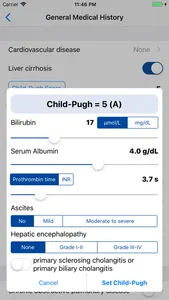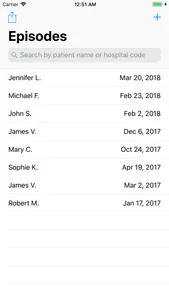PJI Database is a database for iPhone and iPad to store the most relevant data about patients with prosthetic joint infections. It has been developed with the aid of members from the European Study Group of Implant Associated Infections (ESGIAI) of the European Society of Clinical Microbiology and Infectious Diseases (ESCMID).
The database contains selected variables that describe the clinical characteristics, the surgical and the antibiotic treatment, as well as the outcome of each episode. All the data is stored locally and can be exported to a CSV file for further processing with any statistical package, or to share it with other colleagues.
The data input process has been adapted to touch interfaces so that all numeric values and other options can be selected by simply touching or sliding over controls. All changes are automatically saved as they are made.
The app includes tools to calculate the Charlson score, the Child-Pugh score and the MELD score. Total days of hospital stay are also calculated.
--
NOTE: For privacy reasons, the patient hospital code (aka medical record number) is not stored in the database. Instead, a hash of this number is used to track episodes for the same patient, and to make them searchable by this code.
The database contains selected variables that describe the clinical characteristics, the surgical and the antibiotic treatment, as well as the outcome of each episode. All the data is stored locally and can be exported to a CSV file for further processing with any statistical package, or to share it with other colleagues.
The data input process has been adapted to touch interfaces so that all numeric values and other options can be selected by simply touching or sliding over controls. All changes are automatically saved as they are made.
The app includes tools to calculate the Charlson score, the Child-Pugh score and the MELD score. Total days of hospital stay are also calculated.
--
NOTE: For privacy reasons, the patient hospital code (aka medical record number) is not stored in the database. Instead, a hash of this number is used to track episodes for the same patient, and to make them searchable by this code.
Show More




